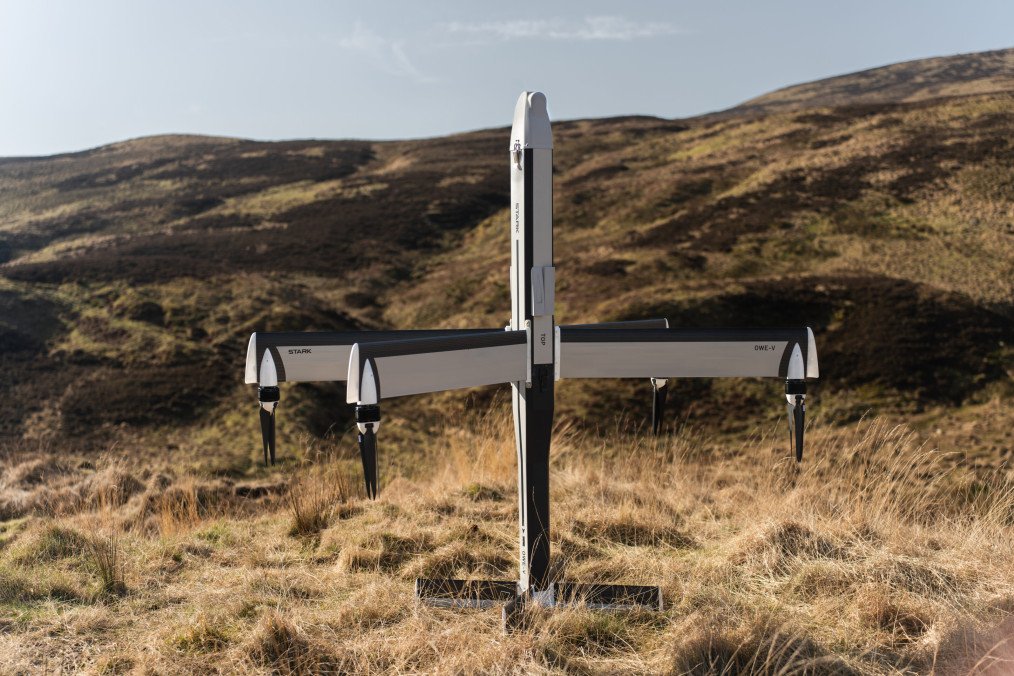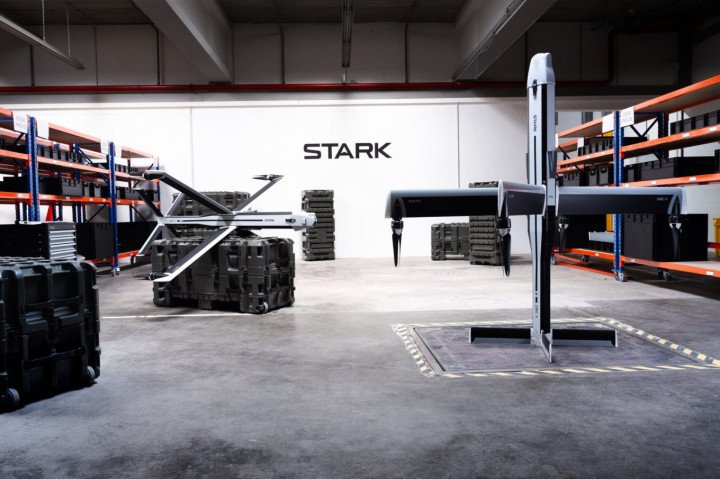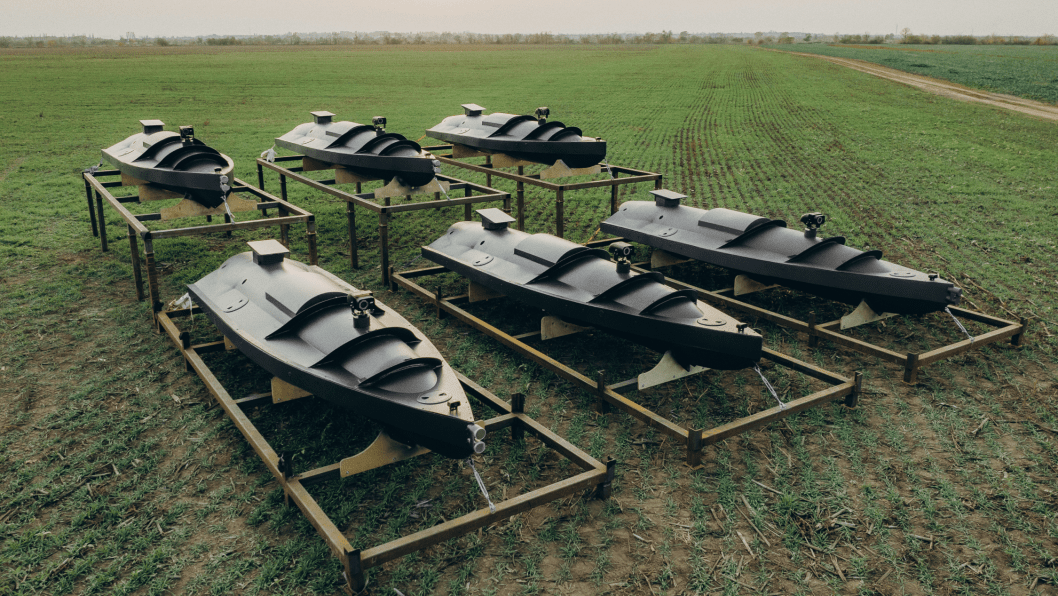- Category
- Latest news
Germany’s Stark Unveils Virtus: AI-Driven Suicide Drone Inspired by Ukrainian Battlefield Experience

Germany-based defense technology startup Stark has revealed details of its latest autonomous loitering munition, the Virtus suicide drone.
According to Defense Express on April 14, Virtus was developed with direct input from the combat experience of Ukraine’s Armed Forces, representing a significant step forward in modern unmanned systems, merging artificial intelligence, electronic warfare resilience, and scalable production into a single, deployable platform.
The Virtus drone operates at a cruising speed of 120 km/h (approximately 75 mph), accelerating to 250 km/h (about 155 mph) in dive mode during final approach.
It can remain airborne for up to 60 minutes and carry a payload of up to 5 kilograms (approximately 11 pounds), suitable for anti-personnel, anti-armor, or electronic warfare applications.
Its key strength lies in its autonomous operational capability, allowing it to navigate without a continuous control link, critical in environments saturated with electronic interference or GPS denial.
Designed under the project name One Way Effector-VTO (OWE-V), Virtus is a vertical take-off and landing (VTOL) drone capable of autonomously engaging targets at distances of up to 100 kilometers.
According to Stark, the drone can navigate and strike in environments with limited or no communication with the operator, thanks to onboard AI-guided targeting and real-time situational analysis systems.
Stark, which also has operations in Kyiv, positioned the Virtus as a direct technological competitor to the HX-2 loitering munition developed by Helsing, another major defense contractor supplying drones to NATO members and Ukraine.
Stark is known for securing the first contract to supply suicide drones to the German Bundeswehr.
Though the company has not explicitly confirmed current deployment, its mission and geographic presence strongly suggest the system is already being field-tested against Russian positions, according to Defense Express.
The drone can be deployed in under five minutes and, if a target is not identified, is capable of returning to base and landing autonomously for future reuse. This “Return-and-Land” functionality increases mission efficiency and reduces equipment loss.

At the heart of the Virtus drone’s control system is Stark’s proprietary Minerva software, which enables a single operator to manage and coordinate multiple drones simultaneously.
This paves the way for drone swarming, a rapidly evolving concept in military operations that enhances area saturation, redundancy, and coordinated attack strategies.
According to Stark, its production facilities are fully automated and optimized for large-scale manufacturing. The company emphasizes that all supply chains for the Virtus drone are located within Europe, positioning it as a secure and scalable option for NATO-aligned procurement frameworks.
The introduction of autonomous systems like the Virtus marks a shift in how militaries approach strike operations, reconnaissance, and layered defense.

With the ability to operate in communication-denied environments and deployable in under five minutes, the Virtus offers strategic flexibility in contested airspaces, enabling deep-strike missions, battlefield reconnaissance, and even suppression of enemy air defenses.
Real-time sensors, AI-based object recognition, and autonomous navigation significantly reduce the cognitive load on operators and allow for near-instantaneous threat response.
The Minerva control system, in particular, demonstrates how software-defined warfare is becoming central to modern military doctrine, enabling adaptive engagement strategies through drone swarm formations and shared targeting intelligence.
Earlier, a drone attack in Zaporizhzhia raised concerns about a possible shift in Russia’s tactics, with reports suggesting an FPV drone may have been used in the city for the first time.

-554f0711f15a880af68b2550a739eee4.jpg)

-72b63a4e0c8c475ad81fe3eed3f63729.jpeg)



-111f0e5095e02c02446ffed57bfb0ab1.jpeg)